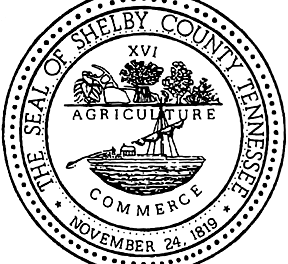This post is written by Jimmie Covington, veteran Memphis reporter with lengthy experience covering governmental, school, and demographic issues. He is a contributing writer with The Best Times, a monthly news magazine for active people 50 and older, where this article first appeared.
By Jimmie Covington
Since at least 2007, county government officials have been holding back millions of dollars of school property tax revenue from one year to the next in a move that allows an equal amount of wheel tax funds to be shifted from school operations to debt payments on school bonds.
The procedure, which may be subject to challenge, apparently has never been fully outlined for the public. The approach cuts school operations off from any growth funds from the property tax rate allocated to schools and limits schools to the amounts of property tax appropriations approved in the county government budget.
General government, and not schools, is responsible for paying the debt costs on school bonds and other general obligation bonds. However, this practice allows some of the funds initially allocated in budgets for school operations to be shifted to help pay the school bond debt.
The procedure was developed by the administration of A C Wharton when he was county mayor and by several county commissioners in office at the time. County trustees starting with the late Bob Patterson have cooperated in holding back part of the property tax funds allocated for school operations each year and placing this “excess” revenue in the county government education fund for use in the next fiscal year.
Tale of the Tape
Figures in the county’s annual-Comprehensive Annual Financial Reports indicate how the practice works.
For example, the financial report for the 2015 fiscal year that ended June 30, 2015, shows the final budgeted county education fund revenues at $361,890,000 from the $2.14 property tax rate approved for schools and $19,398,000 in other local taxes (the wheel tax) for a total $381,288,000.
The actual amounts for the year are listed as $372,756,577 in property tax revenue and $8,531,423 in other tax revenue for a total $381,288,000. The figures are $10,866,577 up in property tax revenue from the final budget and the same amount down in other tax revenue. The $10.8 million would be the “excess property tax revenue” carried forward from the previous year.
A further review of financial records would show that the $10.8 million reduction in other county revenue for school operations was used to help pay school bond debt. The 2014 county financial report shows a similar pattern with the amount of shifted funds at $5,536,777.
The financial report for the 2016 year that ended last June 30 has not been completed.
A Sentence That Makes All The Difference
Records show that in July 2007, county officials added a sentence to the tax rate ordinance. It says: ”Be it further resolved that should the amount collected for schools exceed the amount appropriated for Fiscal Year 2008, the excess of collections over the amount appropriated shall be held in the Education Fund and be applied to the appropriation for Fiscal Year 2009.”
The sentence, with the years changed, has appeared in each tax rate ordinance since then.
Apparently, no legal opinion has been presented publicly on whether the sentence is properly a part of the tax rate ordinance. The purpose of the tax rate ordinance is to set the tax rate. How far it can go in directing how the rax revenues are to be handled is not clear.
(Figures in the 2005 financial report indicate that capping of the school property tax revenue at the appropriated amount started that year. The final budget and actual figures are the same, which would not occur naturally.)
The county trustee is not mentioned in the tax rate ordinance section, but the trustee collects the county’s property taxes and divides the collections for schools among the county and municipal school systems based on the average daily attendance ratios among the systems.
A Big Question
The trustee is an independently elected county official whose duties are set by state law. One of the unanswered questions in the school funds holdback is whether the tax rate ordinance section is binding on the county trustee’s office or if the trustees have been voluntarily holding back the funds because it is something that the county administration and county commissioners wanted done.
David Lenoir, who was elected in 2010, is the current trustee.
It is clear that county Mayor Mark Luttrell’s administration understands and supports the approach. However, it is not clear how well current County Commission members understand the procedure.
At least part of the dispute between the administration and several of the commissioners over the handling of surplus county funds appears to involve the “surpluses” created by the school funds procedure.
“Fine Tuning”
According to a news report in July about the adoption of this year’s property tax rate, Commissioner Eddie Jones asked that the language on holding back part of the school funds be “fine tuned.” However, Harvey Kennedy, county chief administrative officer, said that changing any of the language in the ordinance at that point would delay final action until another reading. A delay, he cautioned, might delay the county’s cash flow.
Commissioner Heidi Shafer proposed that commissioners later consider a measure dealing with all surplus revenues. Discussions apparently are continuing on that proposal.
Commissioners could apparently end the school funds holdback procedure at any time by amending the tax rate ordinance to remove the holdback section. Deleting a section of the ordinance at this point would not affect the tax rate adopted for this year.
Overall, an argument could be made that it is improper to include an education fund section in the consolidated budget that the county mayor presents to the commission each year. The charter directs the county mayor to present a consolidated budget.
(The county Board of Education budget is a separate budget that goes directly to the County Commission each year and does not pass through the county mayor. It includes state and federal funds and countywide sales tax funds as well as funds from county government.)
More Questions
Charter section 6:02 states: “The provisions of this charter shall not apply to county school funds or the county board of education, or the county superintendent of education for any purpose.”
Some exceptions to the section are listed but none of them deal with school funding.
It was reported in the 1970s that then county schools Supt. George Barnes said he would not support passage of the County Government Restructure Act unless the wording were included. The language was carried over to the charter when voters approved the charter in 1984.
Before adoption of the restructure act, which created the county mayor’s position in the 1970s, no part of school funding went through the county’s three-member administrative arm, which the act replaced with the mayor’s post.
Another question involves truth in taxation. When the county property tax rate is set each year, does the public have a right to expect that schools will receive all of the revenue from the school tax rate during the fiscal year for which the taxes are collected? There is no delay in giving the general fund and the debt service fund their shares of property tax revenue.
This year, $2.14 of the county’s $3.47 property tax rate is allocated to schools. The school’s rate has not changed in several years. The tax rate also includes $1.45 for the county’s general fund and $.78 for the debt service fund.
***





